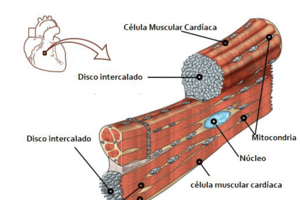Podcast
Questions and Answers
Match the activity with the appropriate MET:
Match the activity with the appropriate MET:
Toileting = 1.0 MET Walking 3 MPH = 3.0 METs Shoveling = 7.0 METs Bicycling 14-16 MPH (flat ground) = 10.0 METs
Vacuuming and gardening are considered light MET values.
Vacuuming and gardening are considered light MET values.
False (B)
The same % training intensities used in the Karvonen formula can be used to calculate upper and lower METs.
The same % training intensities used in the Karvonen formula can be used to calculate upper and lower METs.
True (A)
Intensity of exercise can be prescribed based on METs, HR, and RPE.
Intensity of exercise can be prescribed based on METs, HR, and RPE.
1 MET is the energy expended while sitting quietly and is equivalent to 2.5 mLO2/kg/min.
1 MET is the energy expended while sitting quietly and is equivalent to 2.5 mLO2/kg/min.
How many milliliters of oxygen per kilogram per minute is an individual consuming if they are engaging in an activity that is described as two metabolic equivalents?
How many milliliters of oxygen per kilogram per minute is an individual consuming if they are engaging in an activity that is described as two metabolic equivalents?
The primary use of metabolic equivalents for therapists is:
The primary use of metabolic equivalents for therapists is:
Which metabolic equivalent level is most consistent with walking on a treadmill at 3 miles per hour?
Which metabolic equivalent level is most consistent with walking on a treadmill at 3 miles per hour?
One metabolic equivalent (MET) is equal to:
One metabolic equivalent (MET) is equal to:
The first stage of the Bruce protocol requires roughly how many metabolic equivalents (METs)?
The first stage of the Bruce protocol requires roughly how many metabolic equivalents (METs)?
What standardized measurement refers to the amount of oxygen consumed at rest by the average person?
What standardized measurement refers to the amount of oxygen consumed at rest by the average person?
Which activity would require the greatest metabolic equivalents (METs) value to complete?
Which activity would require the greatest metabolic equivalents (METs) value to complete?
Which level of exercise intensity would be the most appropriate for a patient who is nearing discharge from inpatient cardiac rehabilitation?
Which level of exercise intensity would be the most appropriate for a patient who is nearing discharge from inpatient cardiac rehabilitation?
Flashcards are hidden until you start studying
Study Notes
Metabolic Equivalent of Task (MET) Overview
- 1 MET is the energy expended at rest, equivalent to 3.5 mL O2/kg/min.
- Activities are categorized by their MET values, indicating energy expenditure levels.
MET Values for Specific Activities
- 1.0 MET: Toileting
- 3.0 METs: Walking at 3 mph
- 7.0 METs: Shoveling
- 10.0 METs: Bicycling at 14-16 mph on flat ground
Exercise Intensity Assessment
- Vacuuming and gardening are classified as moderate, not light, activities.
- The same training intensities used in the Karvonen formula apply to MET calculations.
Guidelines for Exercise Prescription
- Exercise intensity can be prescribed using METs, heart rate (HR), and rating of perceived exertion (RPE).
Common Misconceptions
- 1 MET is not 2.5 mL O2/kg/min; it is correctly 3.5 mL O2/kg/min.
- Understanding the resting metabolic rate is crucial for energy expenditure calculations.
Oxygen Consumption Calculations
- To find oxygen consumption for 2 METs: 2 METs x 3.5 mL O2/kg/min = 7.0 mL O2/kg/min.
Importance of METs in Therapy
- Therapists use MET calculations primarily to prescribe appropriate exercise intensity for patients.
Bruce Protocol Testing
- First stage of the Bruce protocol is 5 METs, designed to screen for coronary artery disease.
- As patients progress through the protocol, METs increase with treadmill grade and speed.
Patient Discharge Considerations
- Patients in inpatient cardiac rehabilitation typically exercise between 1-4 METs, with discharge preparation at 3-4 METs.
Key Considerations for Energy Expenditure
- Variables like height and weight are critical when calculating energy expenditure using METs.
Studying That Suits You
Use AI to generate personalized quizzes and flashcards to suit your learning preferences.




